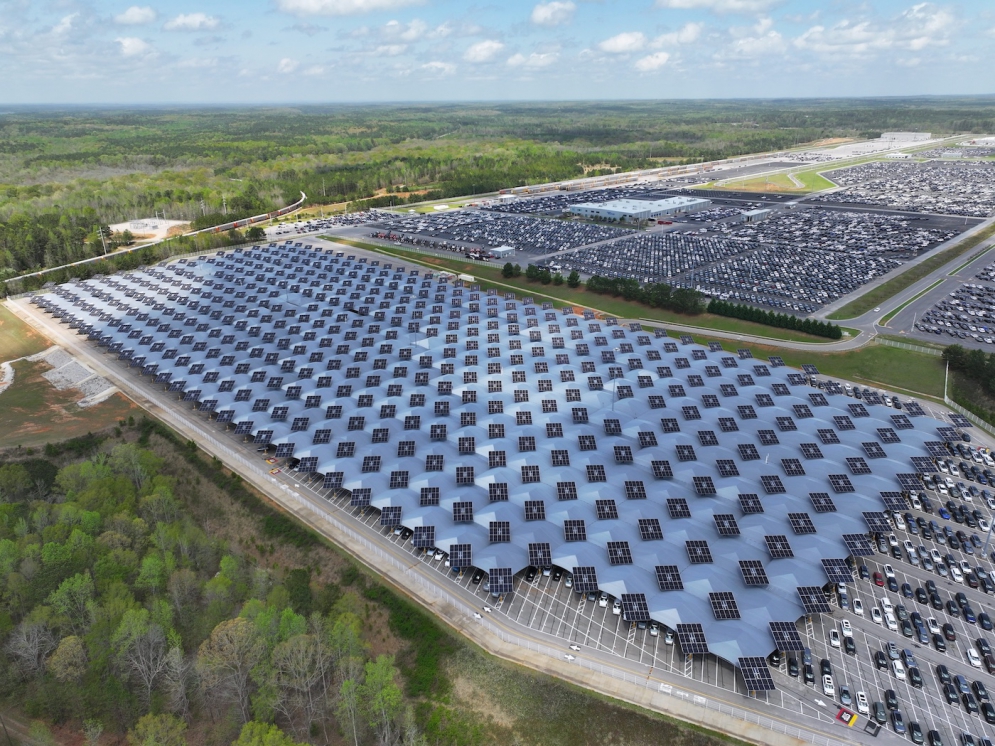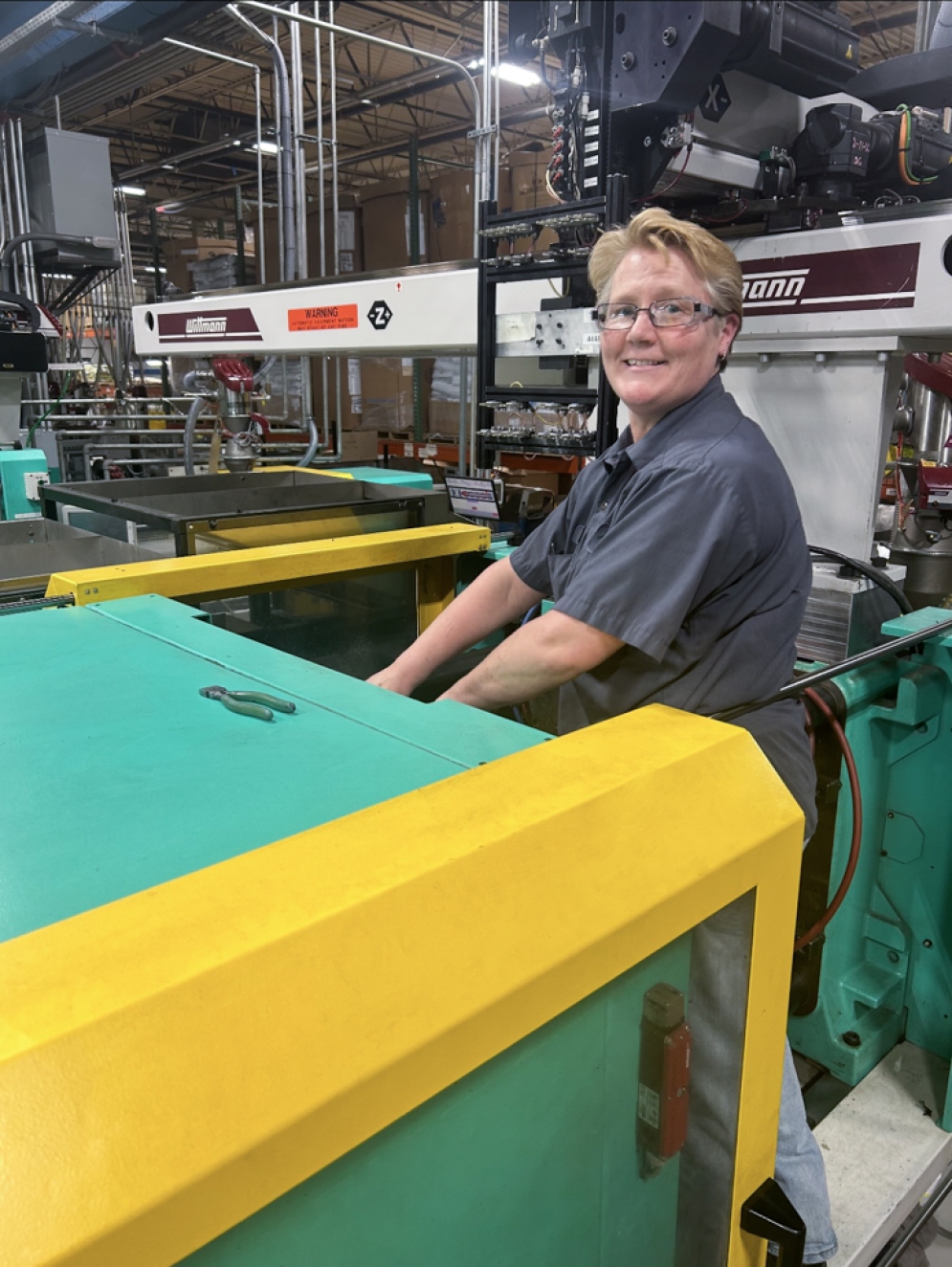All the racing world’s eyes will be on the Motor City on Jan. 15, specifically at the newly renovated Michigan Central Station, when Ford Racing will host its Season Launch event in conjunction with the spotlight being on Detroit for the annual Auto Show.
Mark Rushbrook, global director for Ford Racing, says he wanted a special location for the unveiling.
“This iconic landmark, steeped in the city’s spirit of grit, perseverance, and undeniable love for cars, is the perfect place to kick off an epic year on the track and in the dirt. It’s a powerful statement, complementing the energy of the 2026 Detroit Auto Show happening the same week, truly making Detroit the global hub of automotive excitement,” Rushbrook said.
Rushbrook said all elements of the Ford Racing lineup will be on display.
“From the thunderous roar of NASCAR to the grueling challenges of Mustang endurance sports car racing, and the relentless grit of our off-road teams tackling Dakar and Baja — every facet of Ford’s global racing prowess will be on full display. This isn’t just a launch; it’s a declaration of intent across every racing discipline, a true embodiment of the “Go Like Hell” spirit that drives us,” he explained.
Beyond racecars, Rushbrook said the event will also feature an exclusive sneak peek at an all-new Ford Racing production road car.
As the 2025 Formula season approaches its end, teams are already starting to look ahead to the 2026 season, including the unveiling of what next year’s cars may look like.
Four months ahead of its scheduled race debut in Australia, Audi has debuted a preview of what it will bring to the track in 2026.
“By entering the pinnacle of motorsport, Audi is making a clear, ambitious statement,” says Audi CEO Gernot Döllner. “It is the next chapter in the company’s renewal. Formula 1 will be a catalyst for the change towards a leaner, faster and more innovative Audi.”
Döllner says Audi is entering the racing series with an ambitious yet realistic roadmap: “We are not entering Formula 1 just to be there. We want to win. At the same time, we know that you don’t become a top team in Formula 1 overnight. It takes time, perseverance and tireless questioning of the status quo. By 2030, we want to fight for the World Championship title.”
BROOKLYN, MICH. – Michigan International Speedway announced today that the MISCamping.com infield for the June NASCAR race weekend has officially sold out for the fifth year in a row. General camping, grandstand tickets, and hospitality are still available for fans to experience NASCAR’s return to the Irish Hills in 2026.
“It’s truly remarkable to sell out our MISCamping.com infield for the fifth year in a row and to do so before the new year,” said Joe Fowler, Michigan International Speedway President. “Our fans made this possible as their desire to see NASCAR at MIS only continues to increase. We can’t wait to welcome everyone back for an unforgettable weekend of racing, reunions, and adrenaline in the Irish Hills.”
Fans can still get in on all the race action with grandstand tickets, outside campsites across Michigan’s largest registered campground, and hospitality options for the weekend. Campsite areas still available include Brooklyn Trails located on Brooklyn Highway across from the track, Brookfest Acres located outside of turn 4, M50 Creekside located behind turn 3, Graves Family Campground located on US-12, High Banks located outside of turn 3, and Tree Farm which is just outside of turns 3 and 4.
WEST POINT, GEORGIA — A collaborative team of engineering, construction, and technology leaders is delivering one of the largest dual-purpose solar hail protection canopy projects in the United States, designed to protect vehicles at Kia’s West Point, Georgia, assembly plant — while also generating clean, renewable power.
Initiated after a hailstorm in March 2023 that damaged more than 13,000 vehicles at the plant, and caused millions in damage, the creative and eco-friendly solution has been confirmed by Georgia Power to be the largest Behind-The-Meter system in the state of Georgia.
The project brings together Vehicle Protection Structures (VPS), SolMotiv, Ancora Systems, and ARaymond Energies, who have come together to address a critical need for vehicle protection following a severe hailstorm in 2023. The new carport system combines fixed-tilt solar arrays with a fabric canopy, covering more than 3.2 million square feet of parking area and generating approximately 10 megawatts of solar power when complete.
“This project is a true team effort,” said Keith Busam, Vice President of Business Development and Sustainability for VPS. “By integrating VPS’s proven hail protection systems with solar expertise from SolMotiv and Ancora, and fastening solutions from ARaymond, Kia is not only protecting its vehicles but also advancing its sustainability goals.”
As we prepare to celebrate International Women's Day on Saturday, March 8, we spoke with Brenda Lee, a Process Development Technician for global fastener supplier ARaymond at their North American headquarters in Rochester Hills, Michigan. Brenda, who grew up and lives in Flint, Michigan, shared insights into her role at ARaymond, her journey in the manufacturing industry, and her perspective on what the future can hold for women entering the manufacturing and STEM industries.
Q&A with Brenda Lee, Process Development Technician at ARaymond
Q: What do you do at ARaymond? And what’s a typical day like in your job?
Brenda Lee: In my role as a Process Development Technician, I focus on optimizing and improving manufacturing processes. A typical day involves analyzing current production methods, identifying areas for enhancement, and implementing solutions to ensure efficiency and quality. This includes collaborating with die setters who set up the tools, after which our team processes the jobs, making necessary adjustments to achieve the desired outcomes.
Q: Can you tell us about your career path and how you arrived at your current position?
Brenda Lee: I joined ARaymond in 1998 after working at another automotive supplier, where I was involved in bumper assembly. When I first arrived, there were distinct roles for men and women, but I was determined to break those barriers. Despite being told I couldn't handle certain tasks, like lifting materials or die setting, I took the initiative to learn them and prove myself. Over time, I progressed from a production technician to materials handler, then to die setter, and now to Process Development Technician.
Q: What inspired you to pursue a career in manufacturing?
Brenda Lee: Originally, I studied criminal justice in college, aiming to follow in the footsteps of my grandfather, a police officer, and my uncle, a paramedic and firefighter. However, after witnessing some of the harsher realities of that field and heeding my grandfather's concerns, I decided to pivot. A cousin introduced me to opportunities in manufacturing and I found a new path that has been both challenging and rewarding.
Q: How has being a woman in a traditionally male-centered field impacted your career?
Brenda Lee: Navigating a male-dominated industry has certainly shaped my career and personal growth. Facing skepticism and resistance, I became more determined and focused. There were instances where my capabilities were doubted, and I had to continually prove myself. This journey has made me stronger and more resilient, but it's also highlighted the need for equal recognition and opportunities for women in the field.
Now with all the changes in recent years, there’s much more diversity in this field, but it was a struggle along the way. There were people who felt I didn’t belong. But as a self-taught and determined learner, I’ve managed to continue my growth in the industry. To me, it was the first time I was told “No, you can’t do that” that got me motivated. I was determined to make it work.”
Q: What advice would you give to young women considering careers in engineering or manufacturing?
Brenda Lee: It's essential to cultivate determination and resilience. Challenges and naysayers are inevitable, but using those obstacles as motivation can drive you forward.
Also, don't be discouraged by physical demands; there are always tools and methods that can make you work smarter and overcome those obstacles. Most importantly, believe in your capabilities and don't let others define your potential.
The biggest thing for me for women in the industry is a “mind over matter” mentality. You have to set your mind straight, and whatever is thrown at you, whatever people say, let it go, and use that as motivation to get to where you’re going.
Q: What are your career goals going forward?
Brenda Lee: I enjoy my current role as a Process Development Technician, but my next step to advance my career would be a supervisor role, and that’s an eventual goal. I’ve filled in for those roles in the past.
Q: How can the industry support and retain more women in STEM roles?
Brenda Lee: Encouragement and support from management are crucial. Providing women with the necessary tools, training, and opportunities to advance is essential. Early exposure to STEM programs can spark interest, but continuous support and mentorship are key to retention. Creating an environment where women's voices are heard and valued will foster innovation and diversity in the industry. I also encourage men in the workplace to speak up if women are being undervalued, as that can have a major impact.
I would also say to parents who have daughters to teach them at a young age that it’s OK for girls to be in sports and other activities that tend to be more male-dominated. Teach them to be a confident and strong-willed young woman, to be determined, not give up so quickly, and have an inner drive to get ahead.
Q: What efforts is ARaymond making to inspire and support women in STEM professions?
Brenda Lee: ARaymond has been moving in a positive direction with an approach that emphasizes fairness and diversity. There's a conscious effort to encourage women to pursue various roles within the company and to provide the support needed for their growth and development. There’s a recognition that women’s voices need to be heard, and their input taken seriously.
News Categories
Popular Tags
Search Reviews by Make

AutoTechReviews is your home for In-depth reviews of the latest cars, trucks, and SUVs; information on all the emerging vehicle technology; and breaking news from the world of NASCAR and other motorsports.







